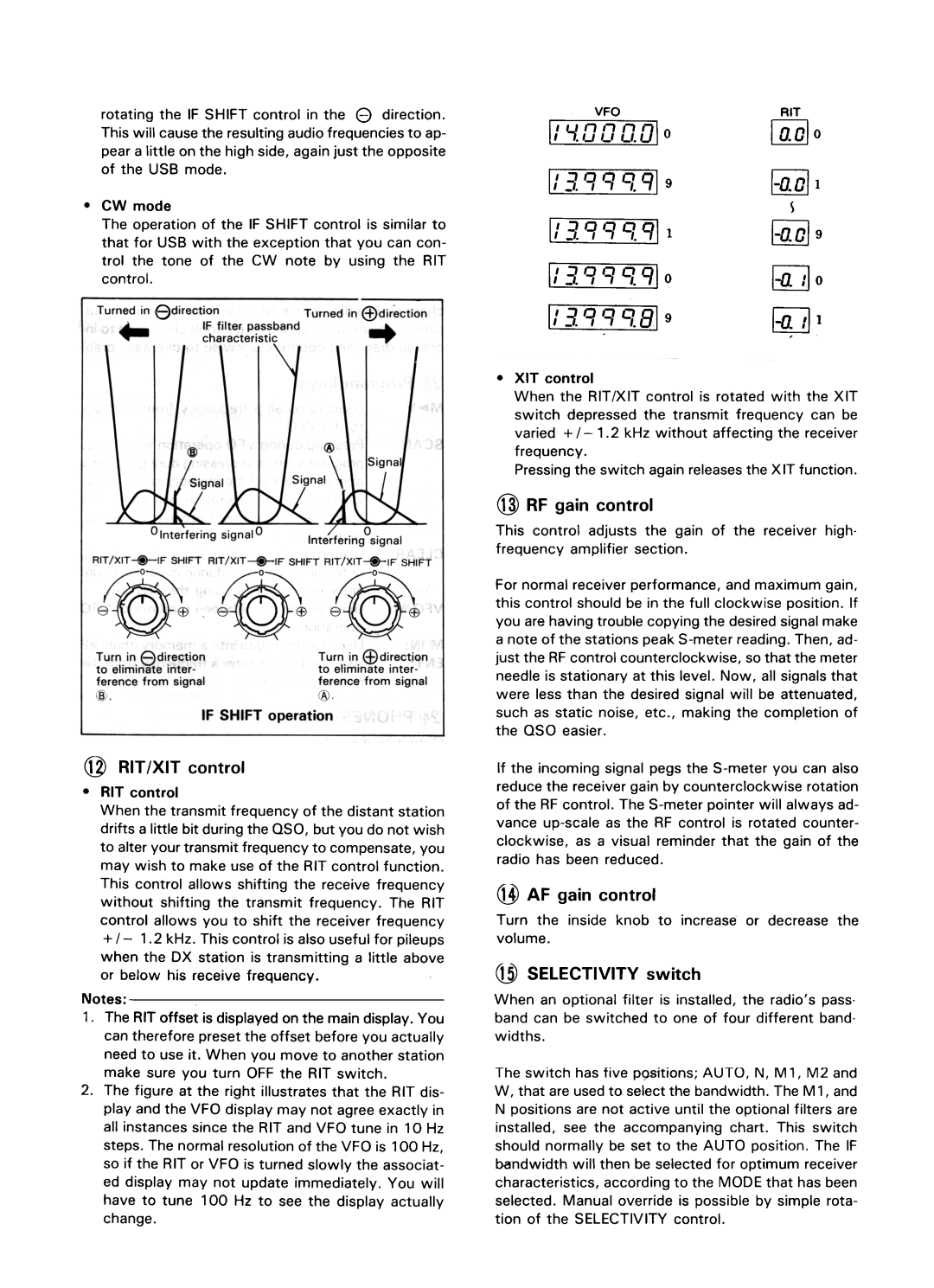
rotating the IF SHIFT control in the e direction. This will cause the resulting audio frequencies to ap- pear a little on the high side, again just the opposite of the USB mode.
.CW mode
The operation of the IF SHIFT control is similar to that for USB with the exception that you can con- trol the tone of the CW note by using the RIT control.
@RIT/XIT control
.RIT control
When the transmit frequency of the distant station drifts a little bit during the OSO, but you do not wish to alter your transmit frequency to compensate, you may wish to make use of the RIT control function.
This control allows shifting the receive frequency without shifting the transmit frequency. The RIT control allows you to shift the receiver frequency
+/
when the OX station is transmitting a little above
or below his receive frequency.
Notes:
1.The RrT offset is displayed on the main display. You can therefore preset the offset before you actually need to use it. When you move to another station make sure you turn OFF the RIT switch.
2.The figure at the right illustrates that the RIT dis- play and the VFO display may not agree exactly in all instances since the RIT and VFO tune in 10Hz steps. The normal resolution of the VFO is 100 Hz, so if the RIT or VFO is turned slowly the associat-
ed display may not update immediately. You will have to tune 100 Hz to see the display actually
change.
| VFO |
|
| RIT |
I/. U " | II | n n' |
| |
|
| D | 0 | ~o |
II |
| |||
Ii=!a | q | 0 ol | 9 |
|
q | ~1 | |||
~,., I |
| |||
|
|
|
| S |
I, :t a | q | 0: l1l |
| ~9 |
=I 0 | q | 0 ol |
|
|
EQ;]o | ||||
|
|
|
| |
[[3 q::l qal9 | ~l | |||
.XIT control
When the RIT/XIT control is rotated with the XIT switch depressed the transmit frequency can be varied + /
frequency.
Pressing the switch again releases the XIT function.
@ RF gain control
This control adjusts the gain of the receiver high- frequency amplifier section.
For normal receiver performance, and maximum gain, this control should be in the full clockwise position. If you are having trouble copying the desired signal make a note of the stations peak
just the RF control counterclockwise, so that the meter needle is stationary at this level. Now, all signals that were less than the desired signal will be attenuated, such as static noise, etc., making the completion of the OSO easier.
If the incoming signal pegs the
reduce the receiver gain by counterclockwise rotation of the RF control. The
clockwise, as a visual reminder that the gain of the
radio has been reduced.
@ AF gain control
Turn the inside knob to increase or decrease the volume.
~SELECTIVITYswitch
When an optional filter is installed, the radio's pass- band can be switched to one of four different band- widths.
The switch has five pQsitions; AUTO, N, M 1, M2 and W, that are used to select the bandwidth. The M 1, and N positions are not active until the optional filters are
installed, see the accompanying chart. This switch should normally be set to the AUTO position. The IF bandwidth will then be selected for optimum receiver
characteristics, according to the MODE that has been selected. Manual override is possible by simple rota- tion of the SELECTIVITY control.
